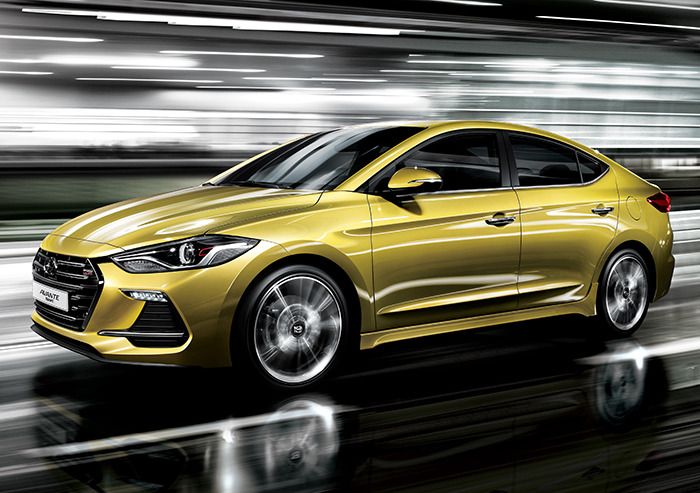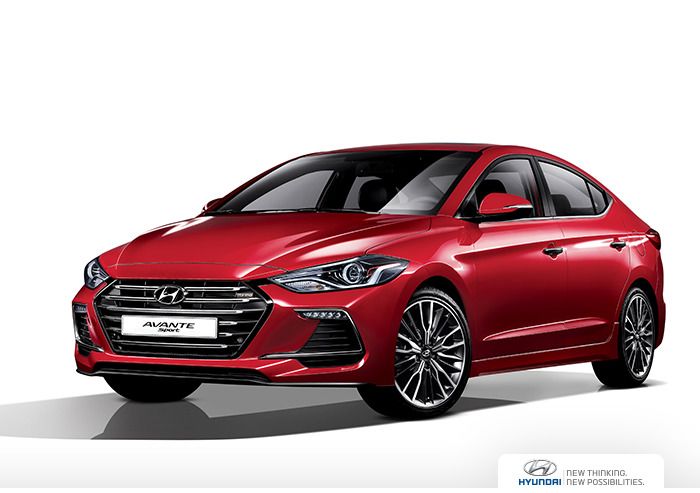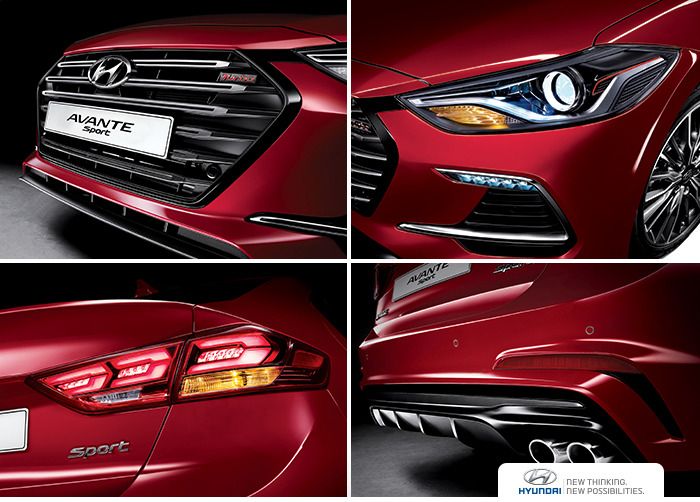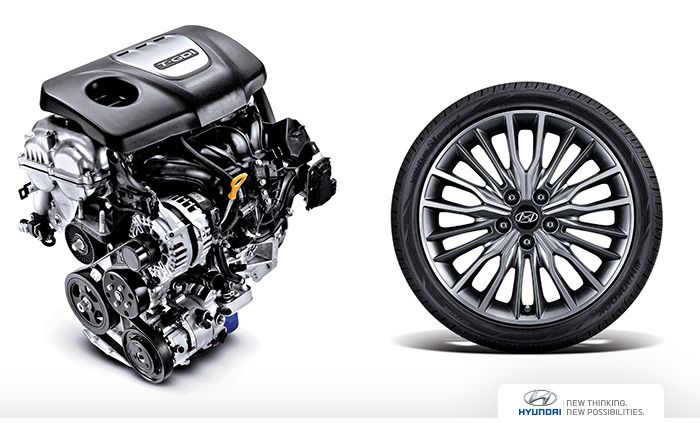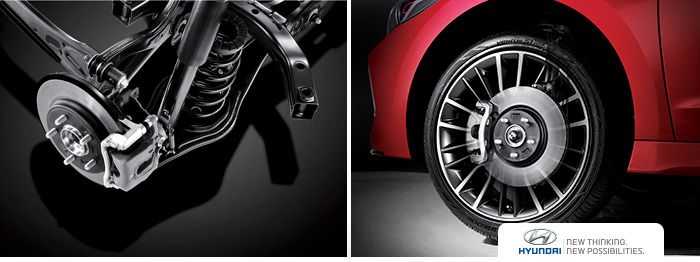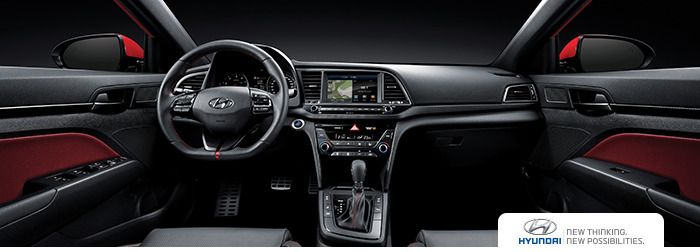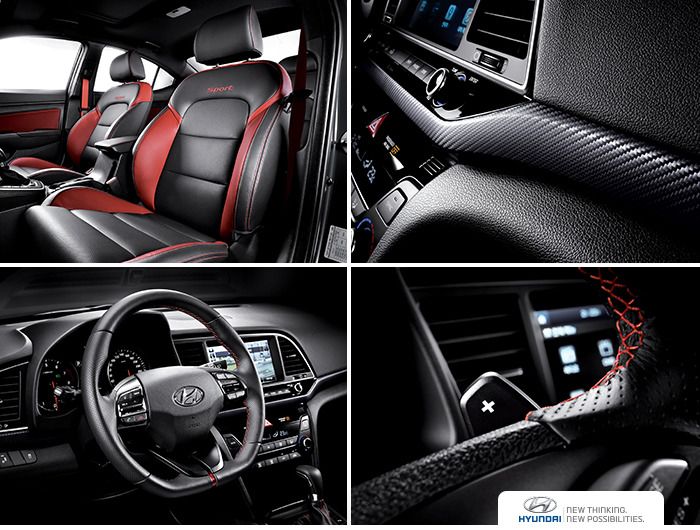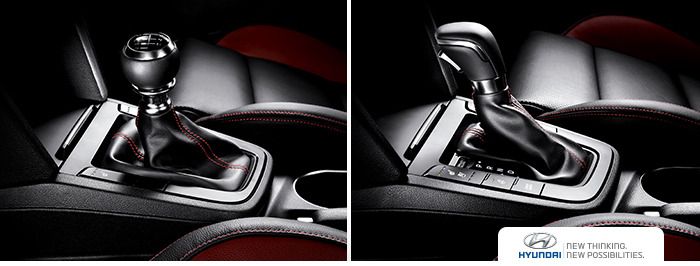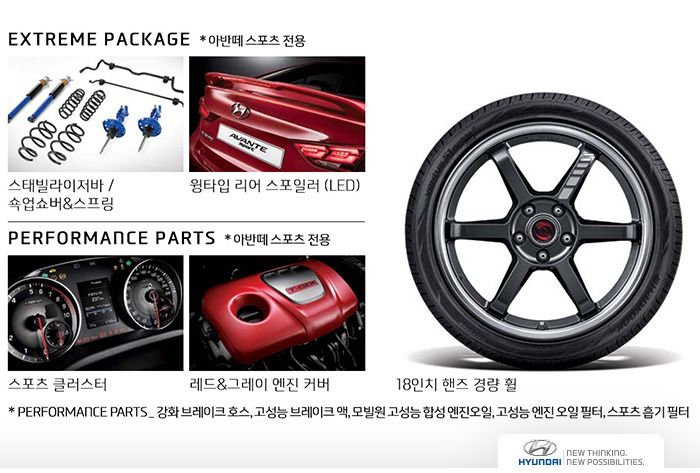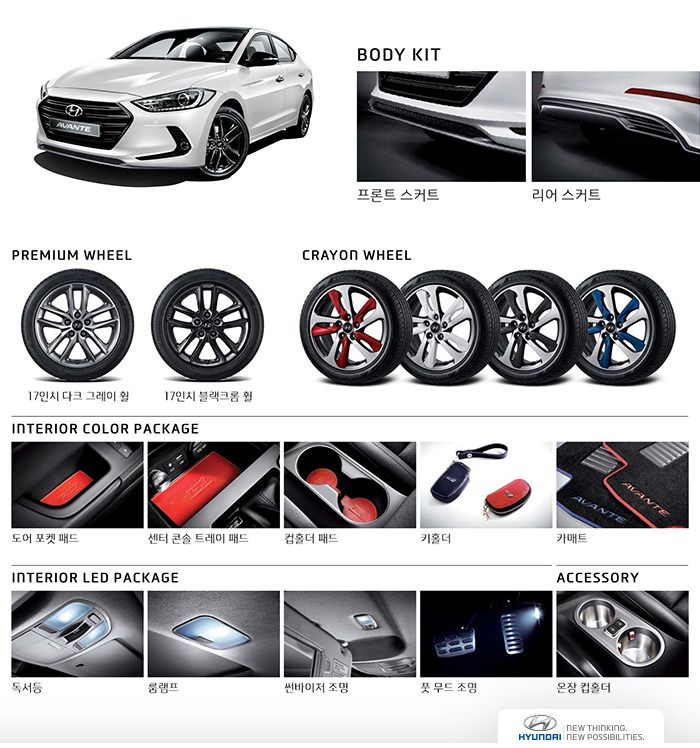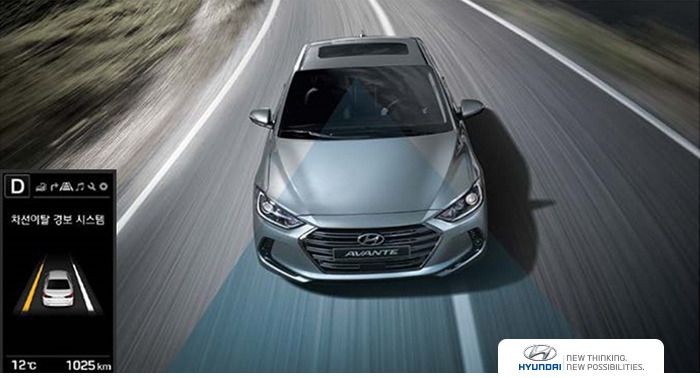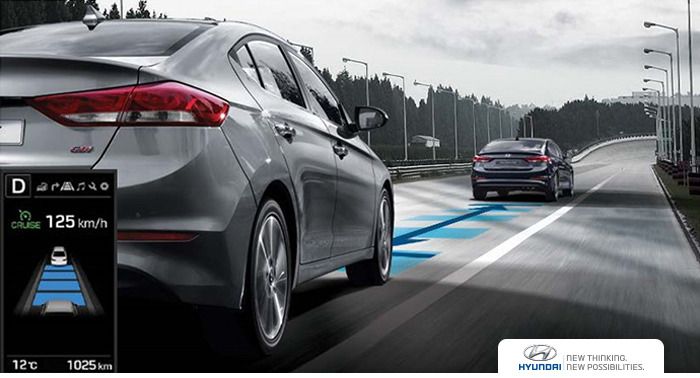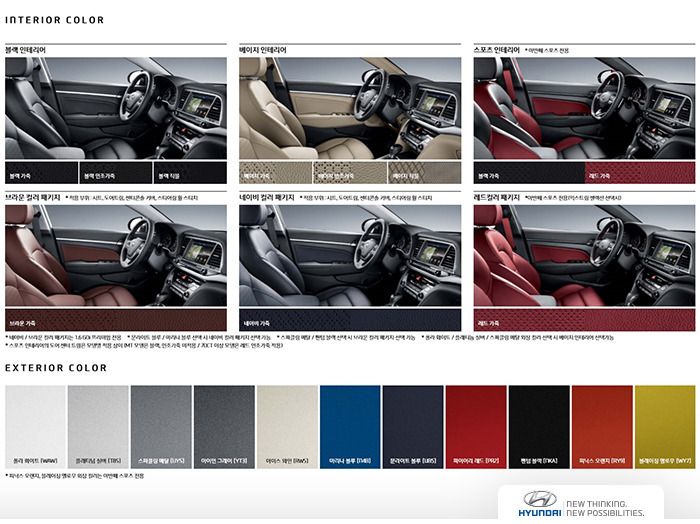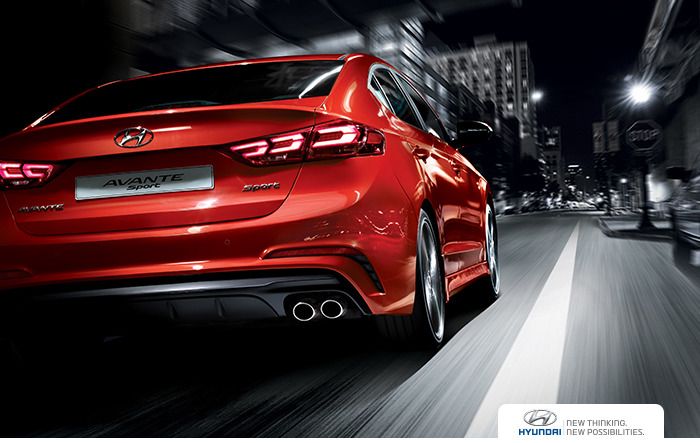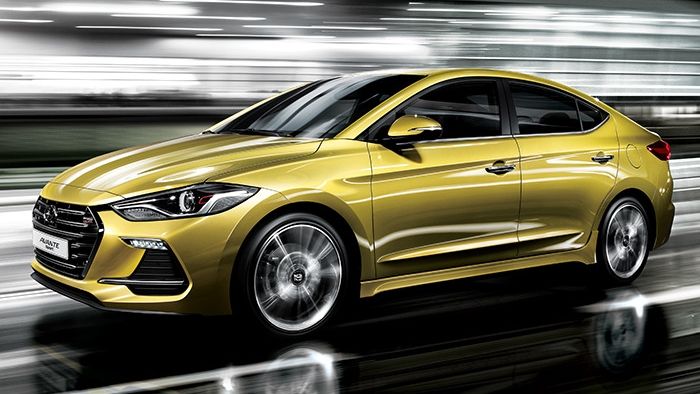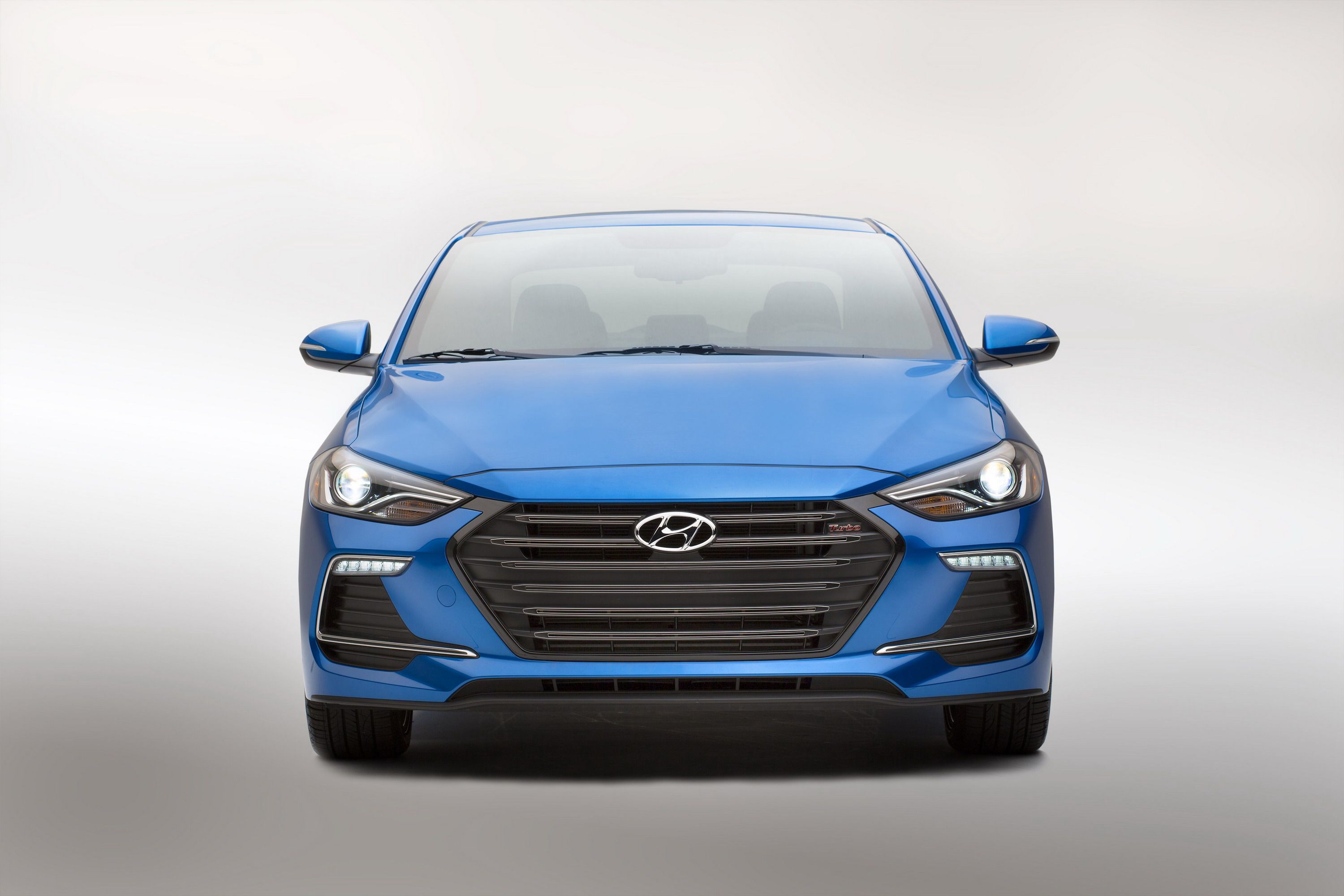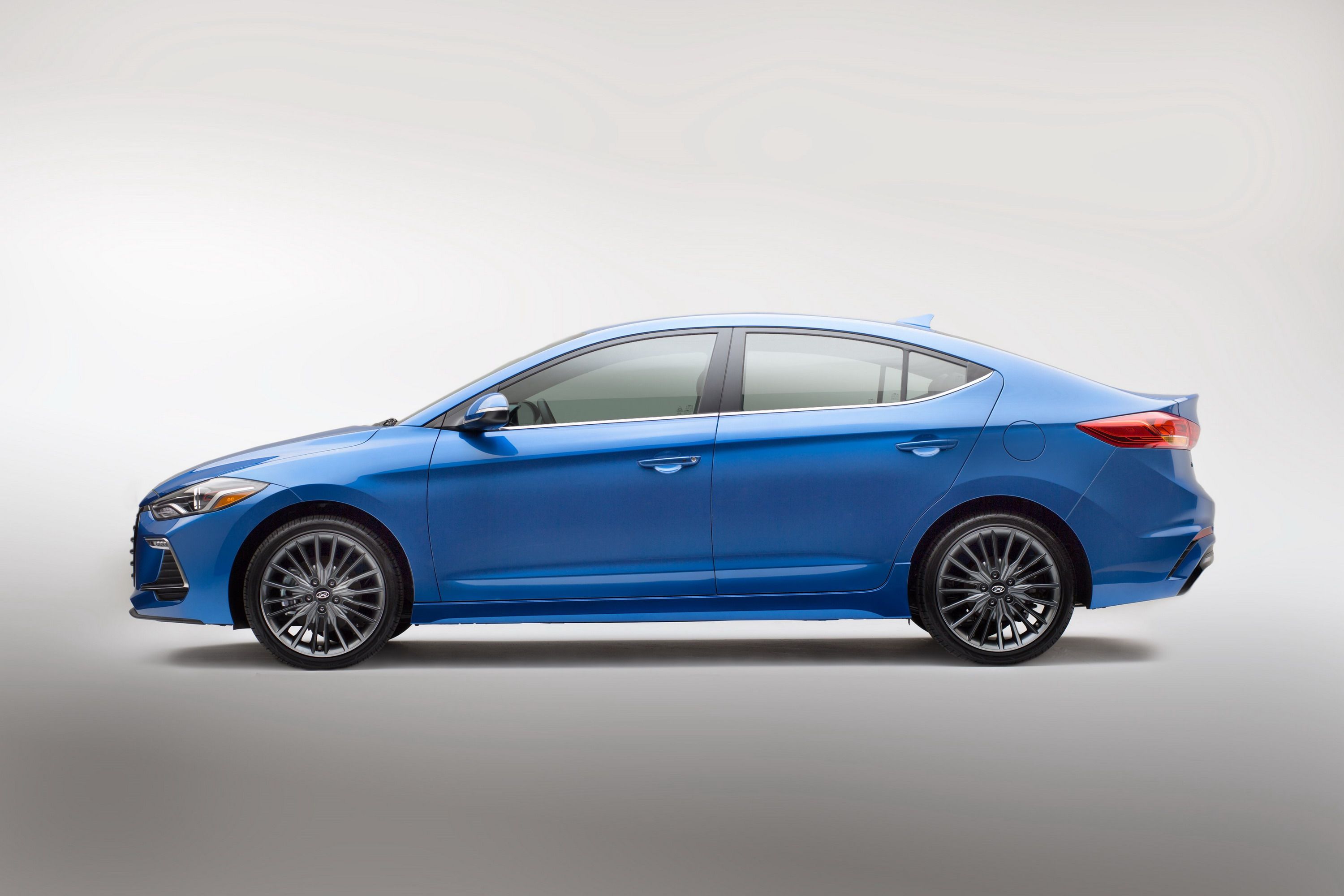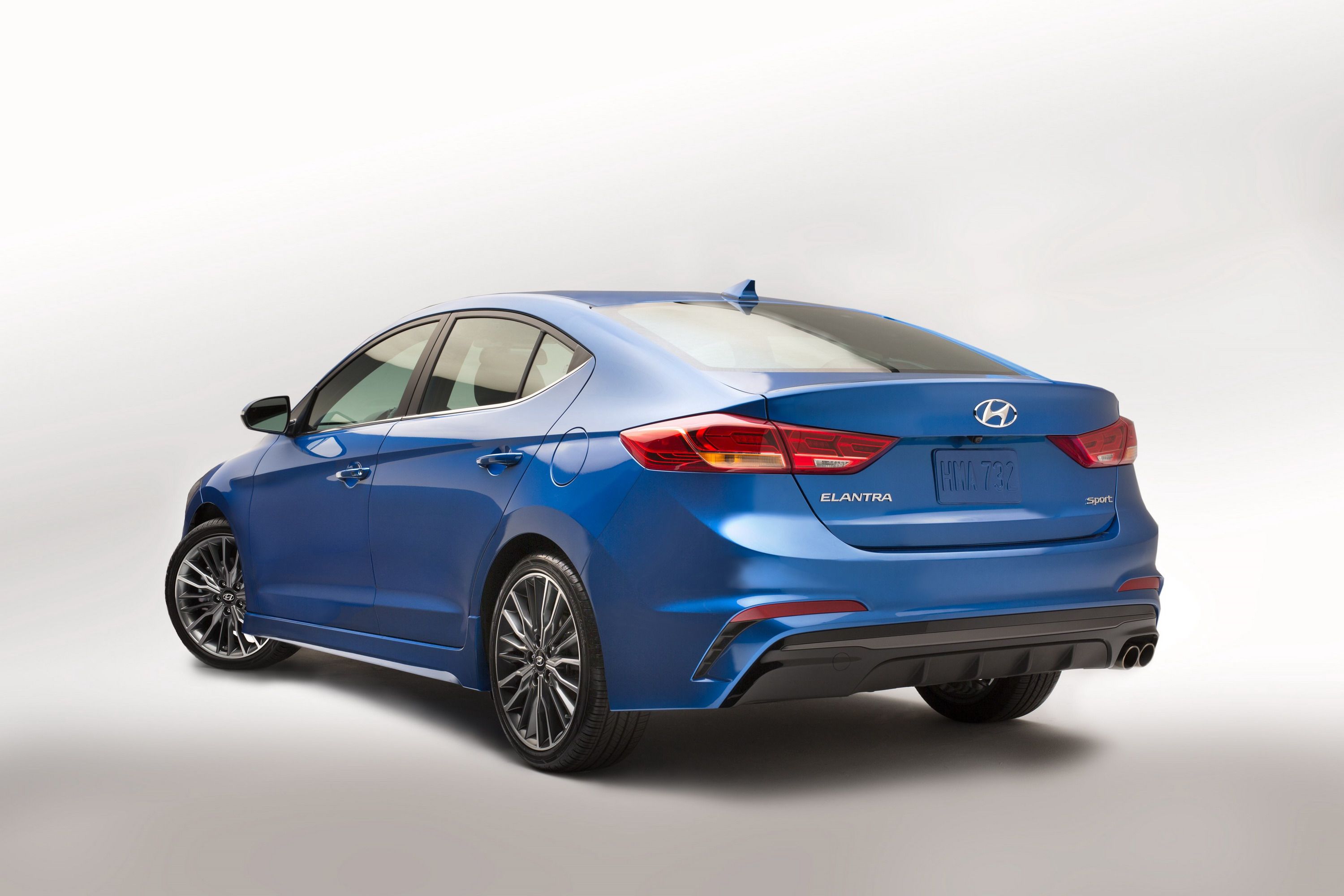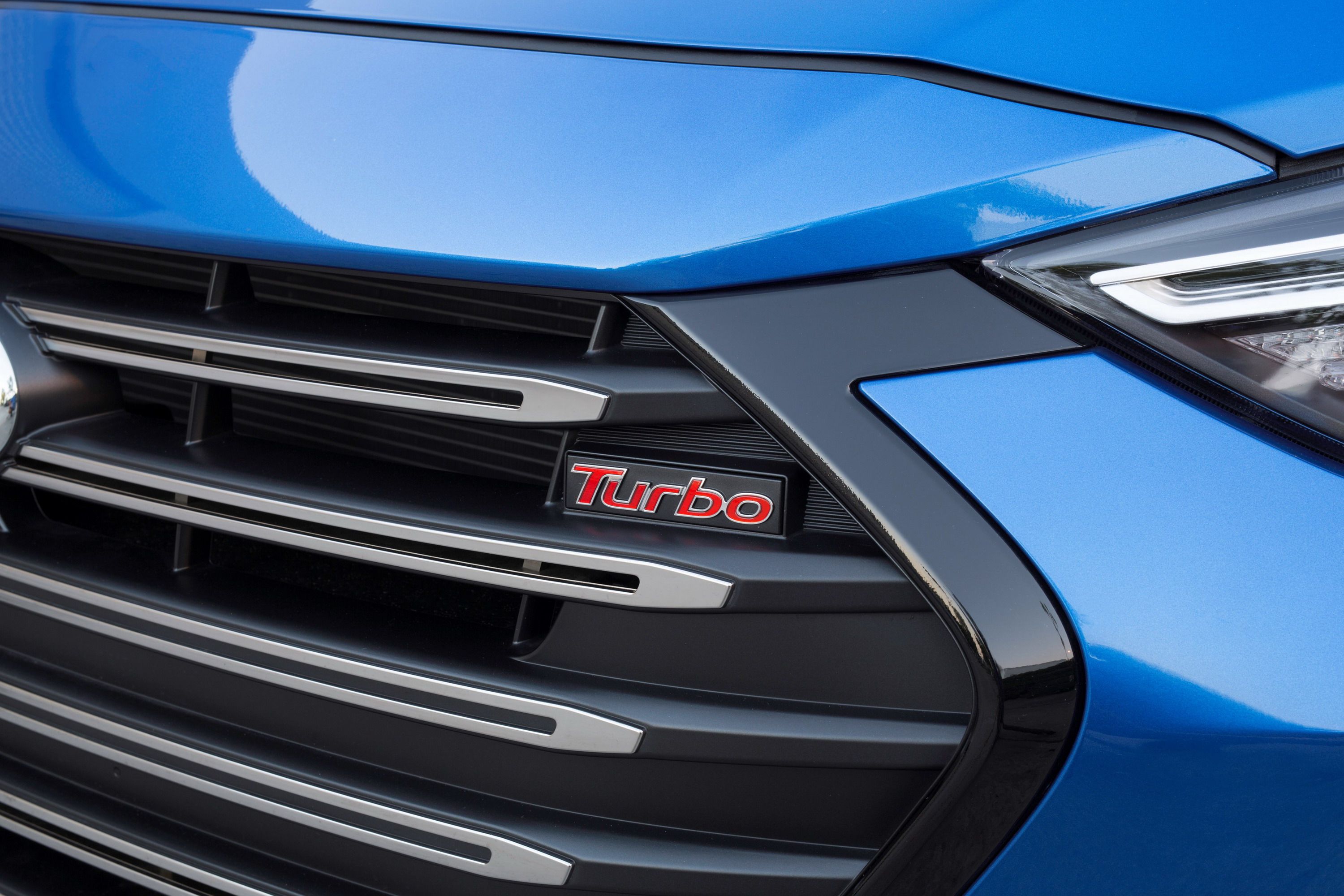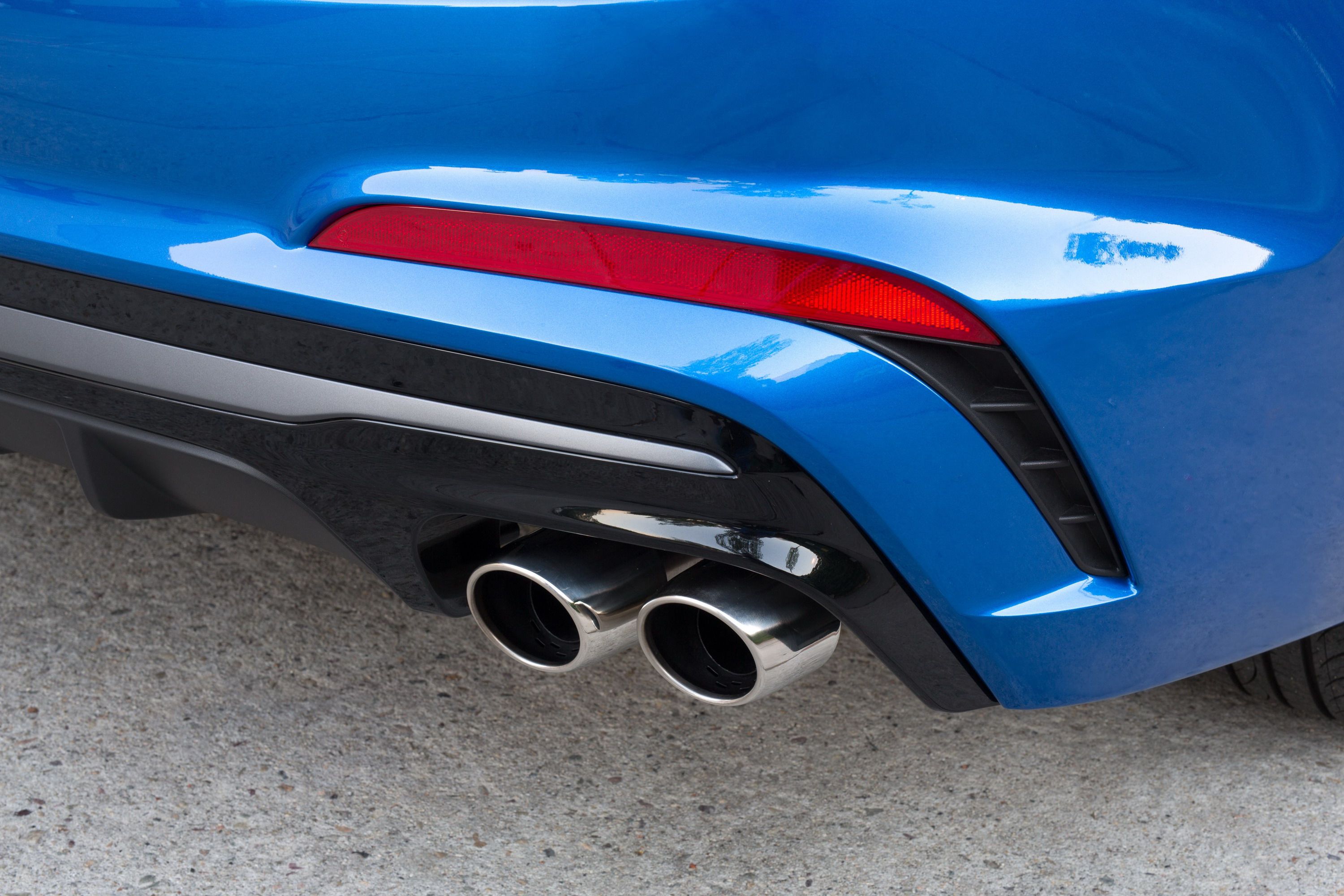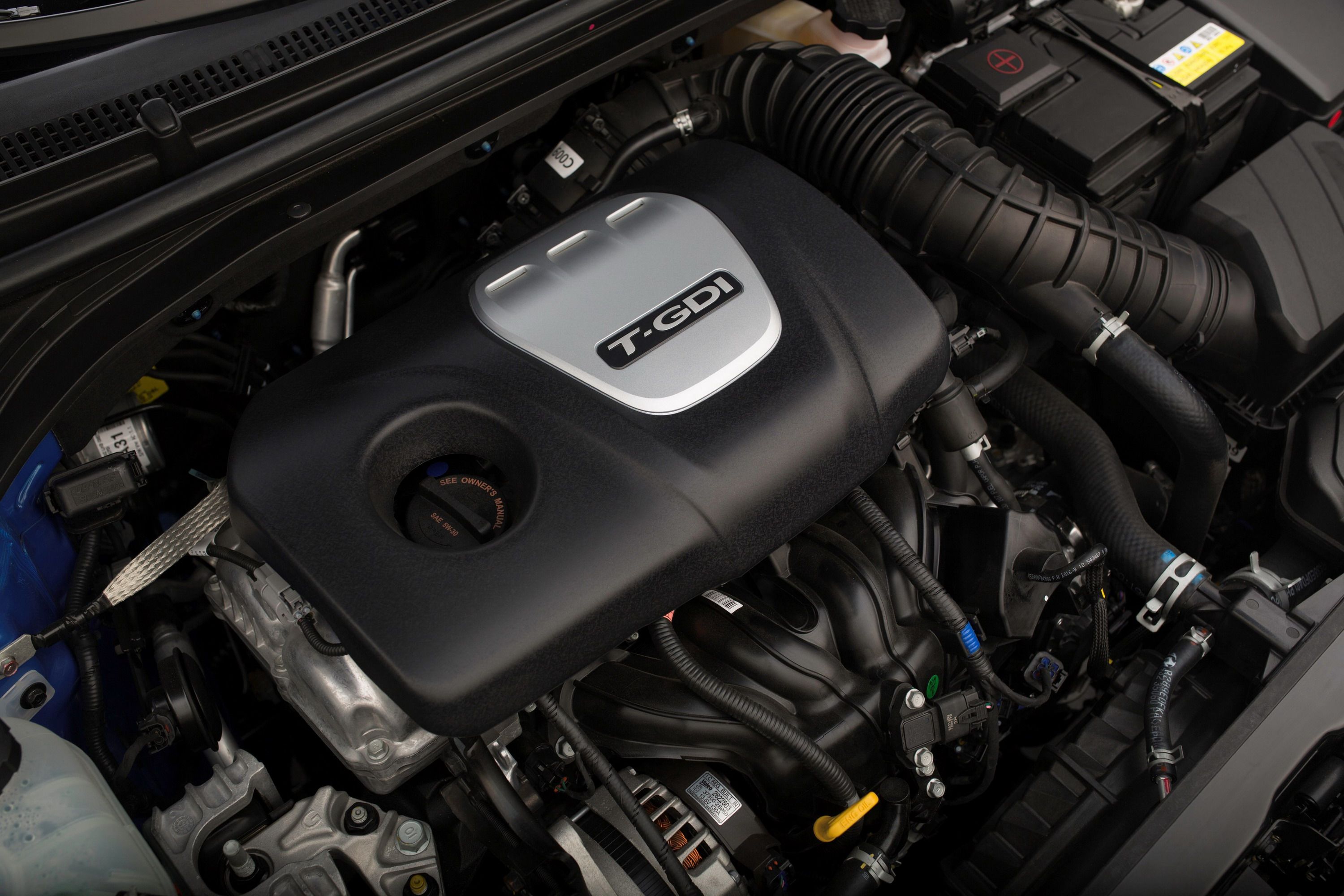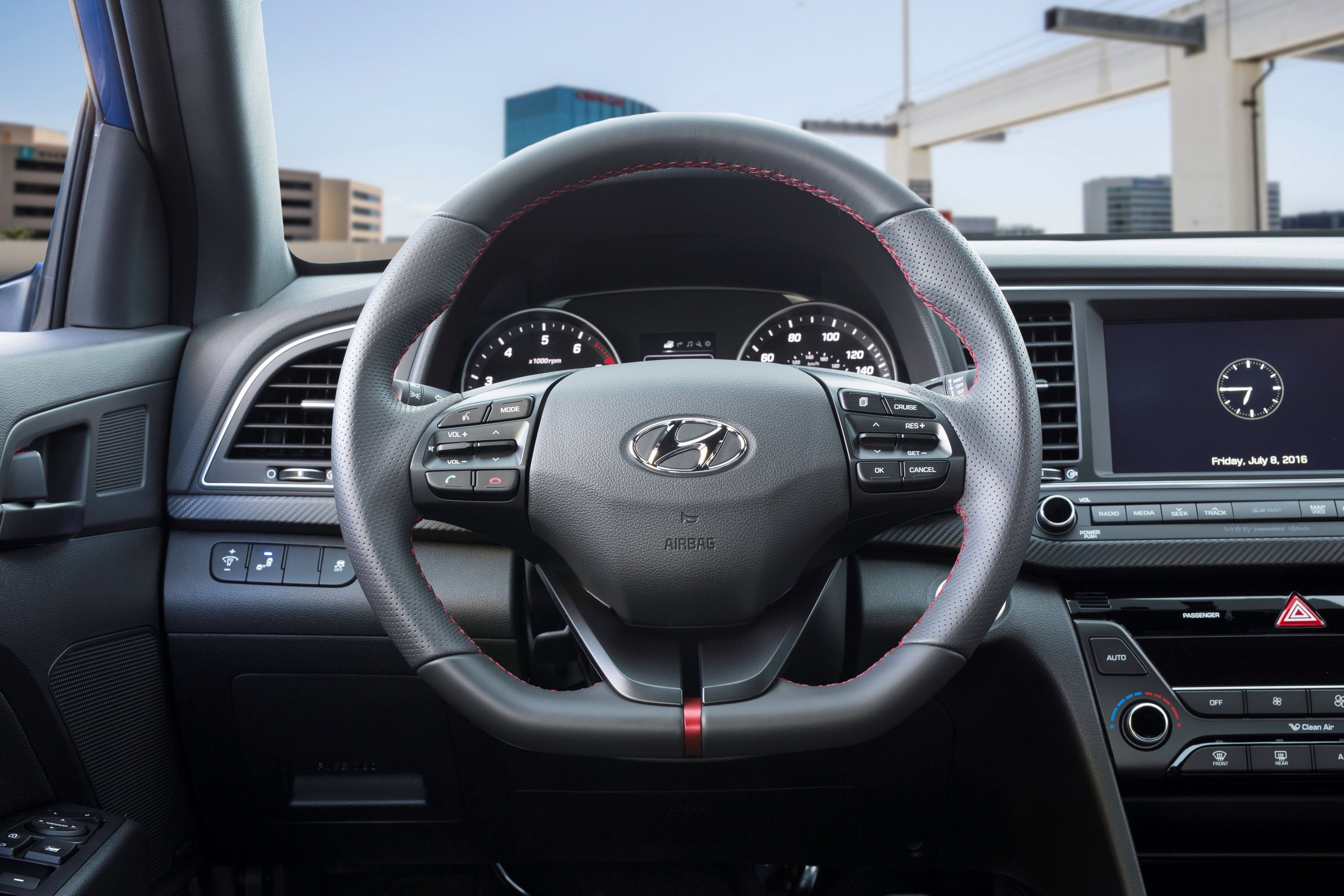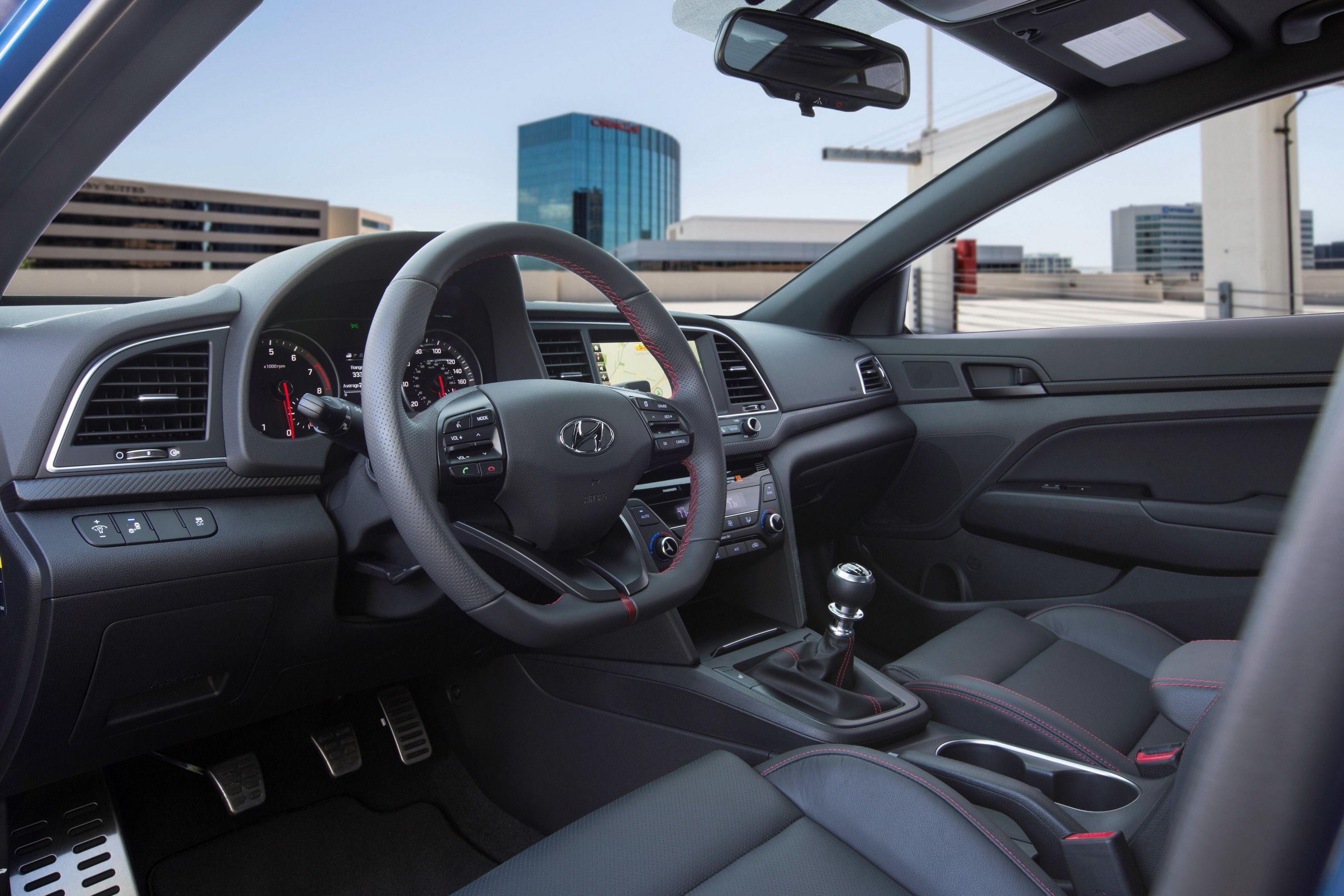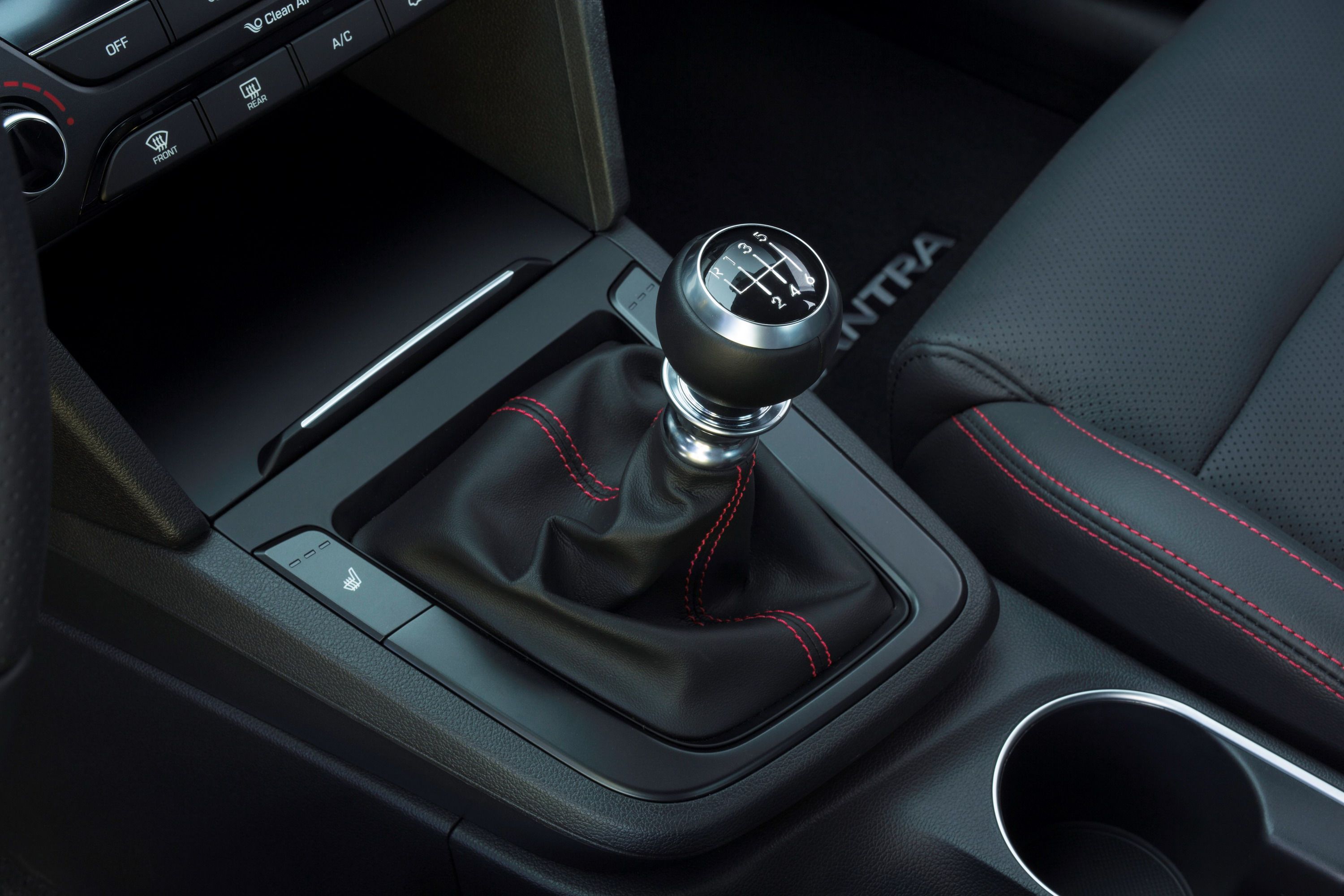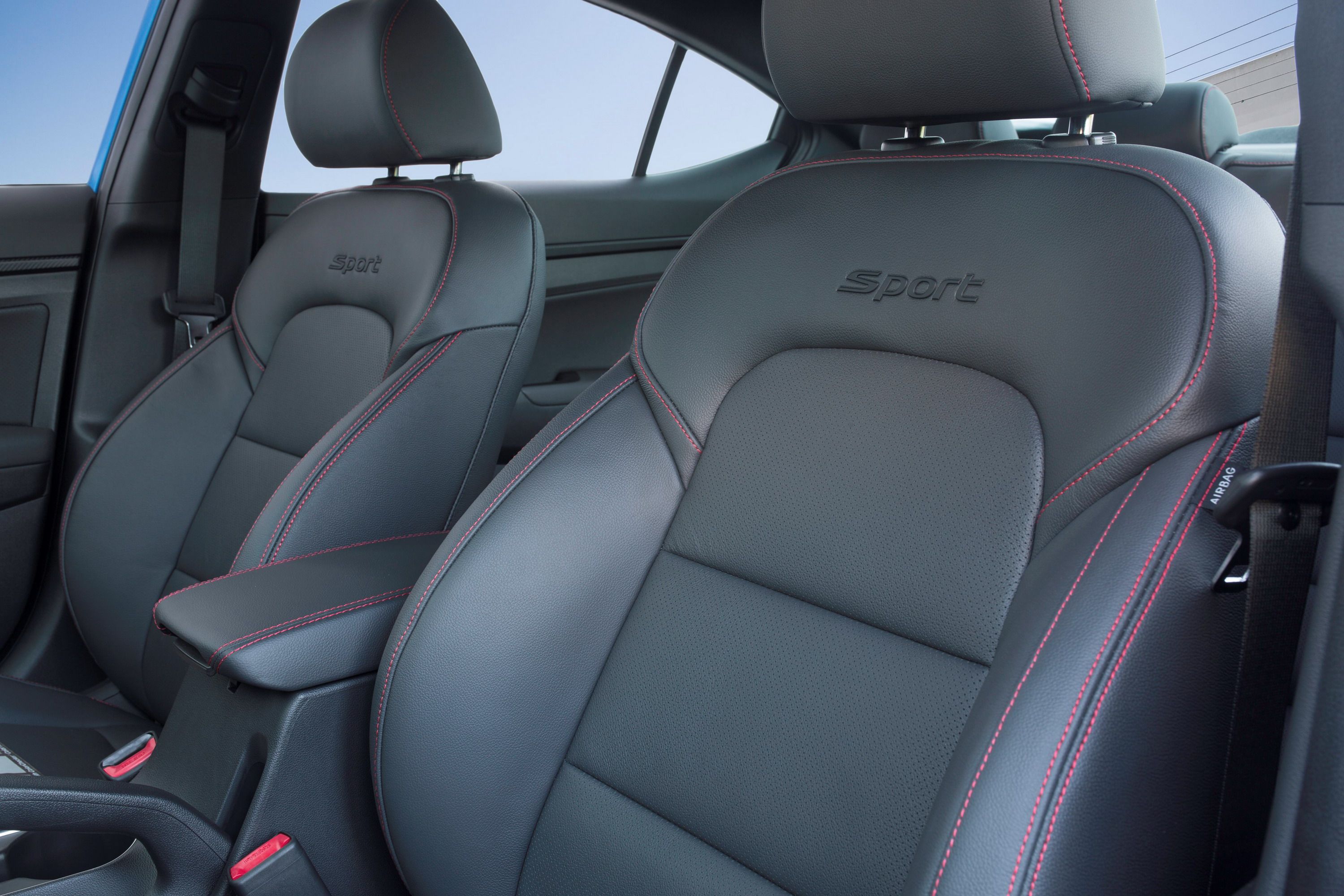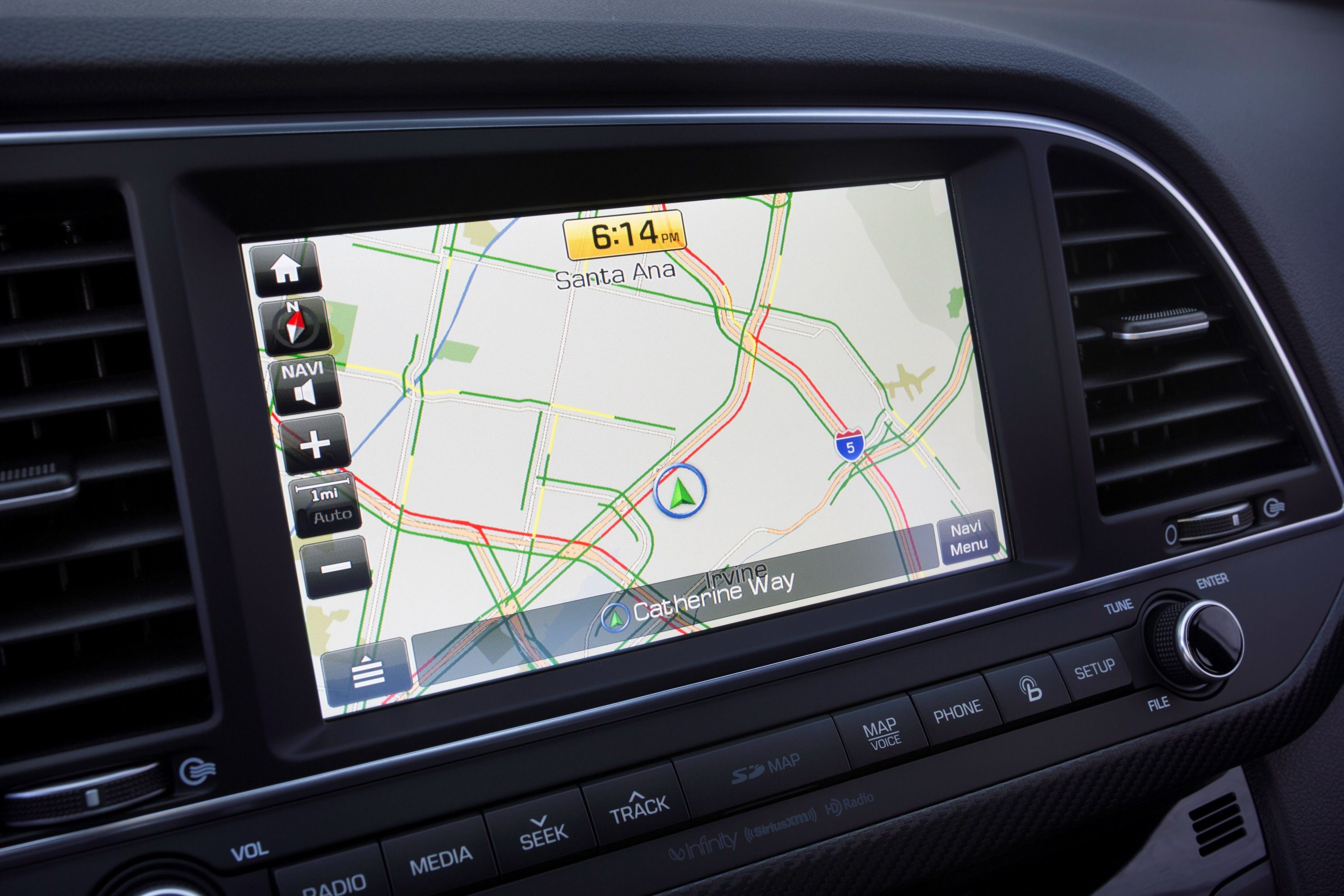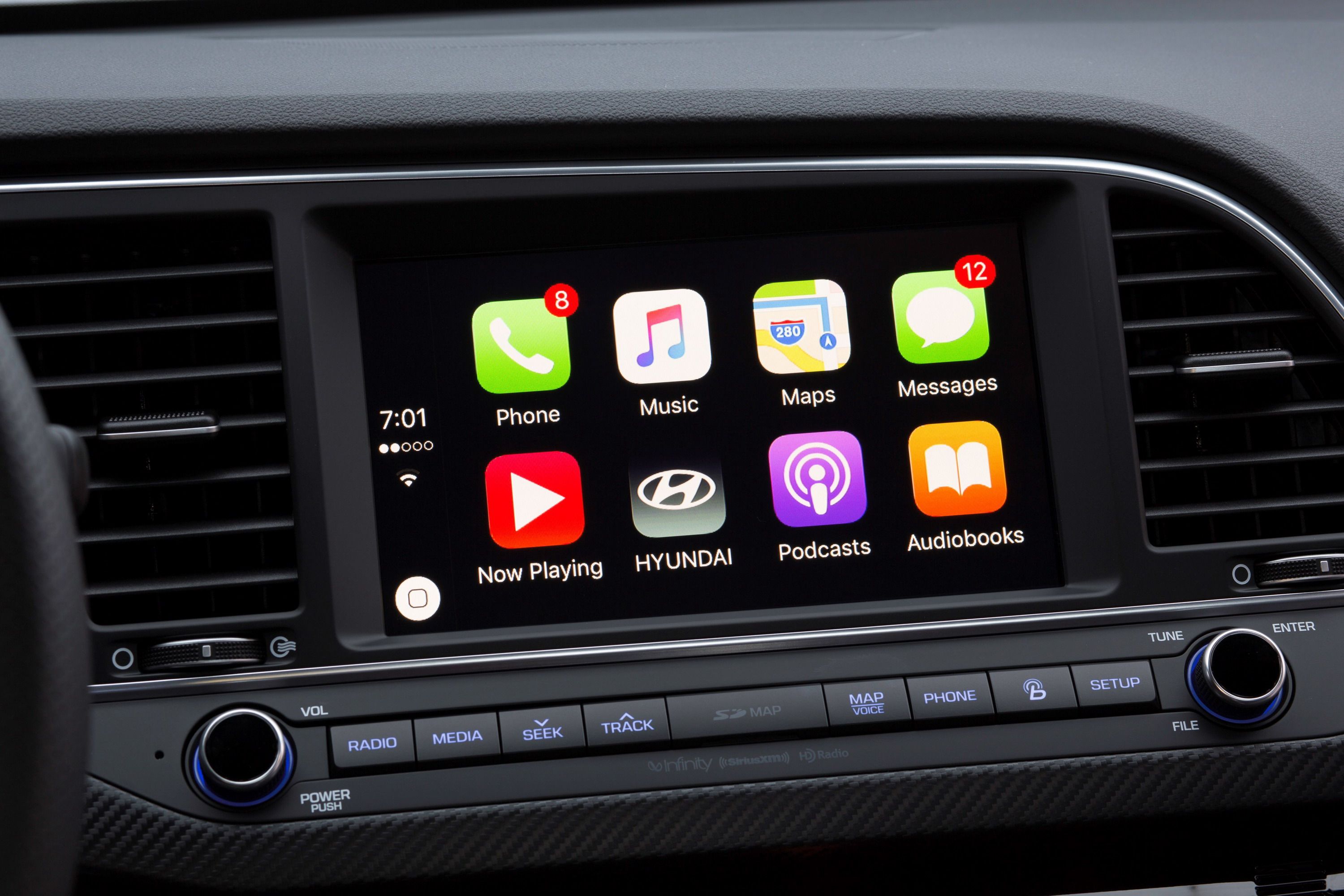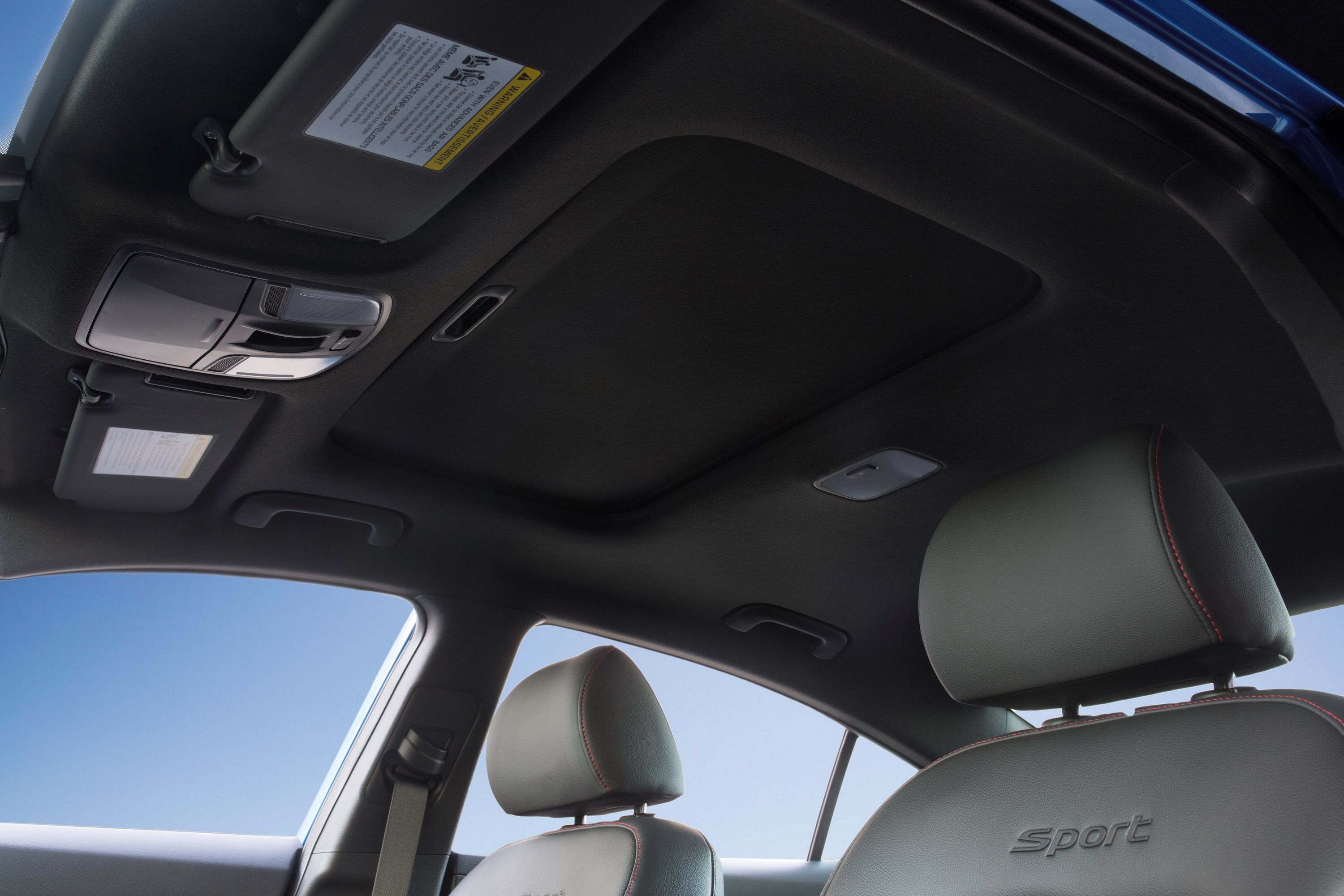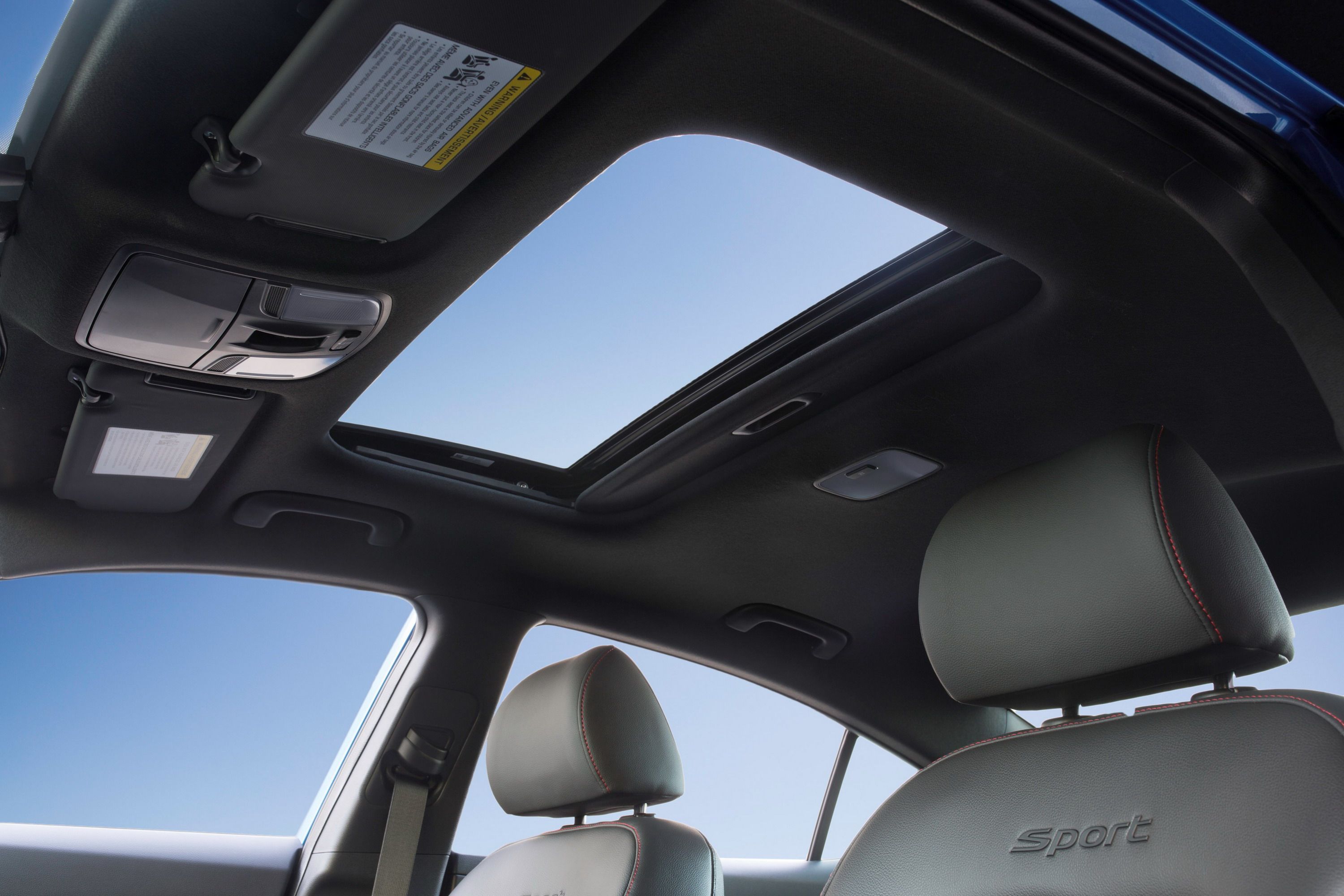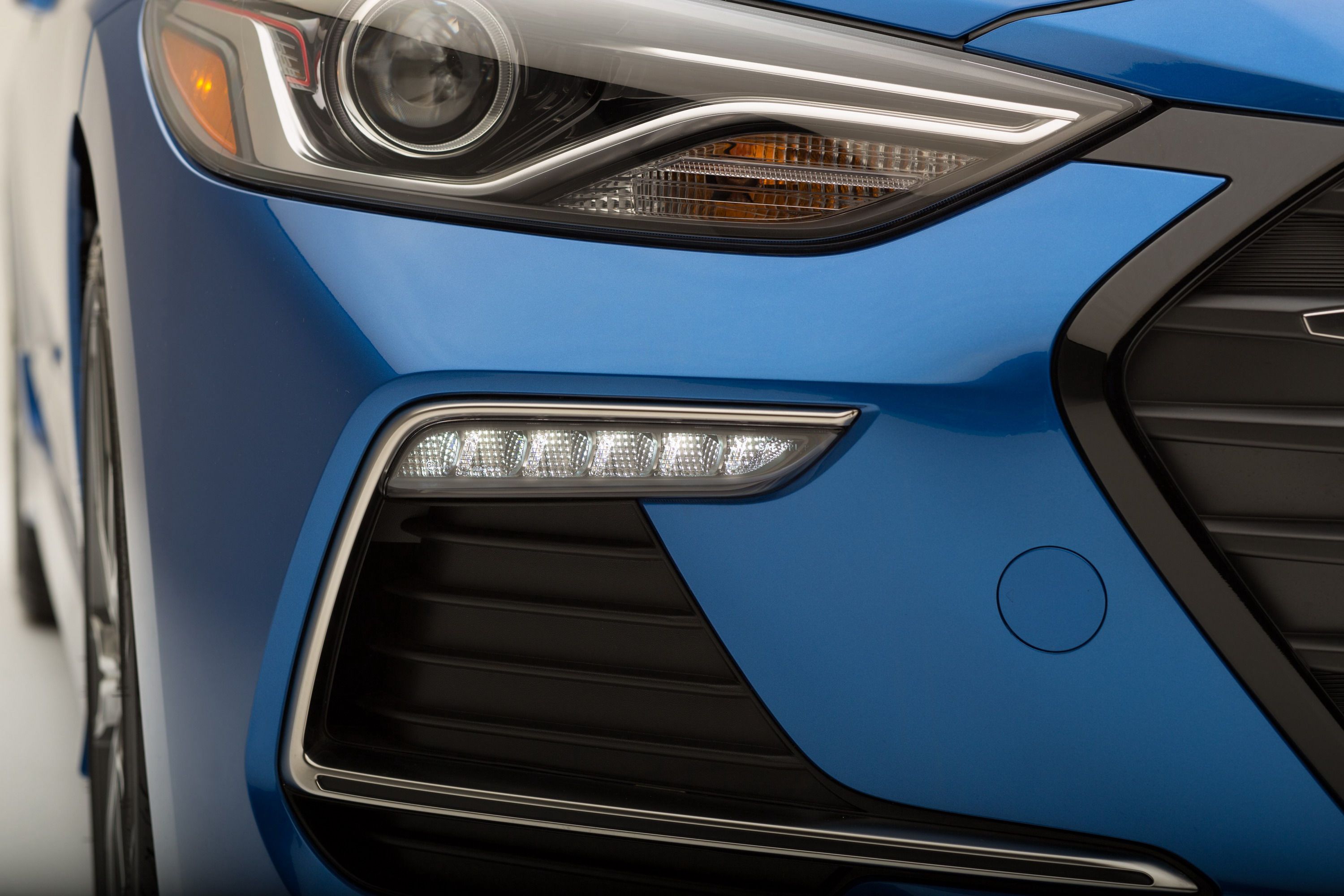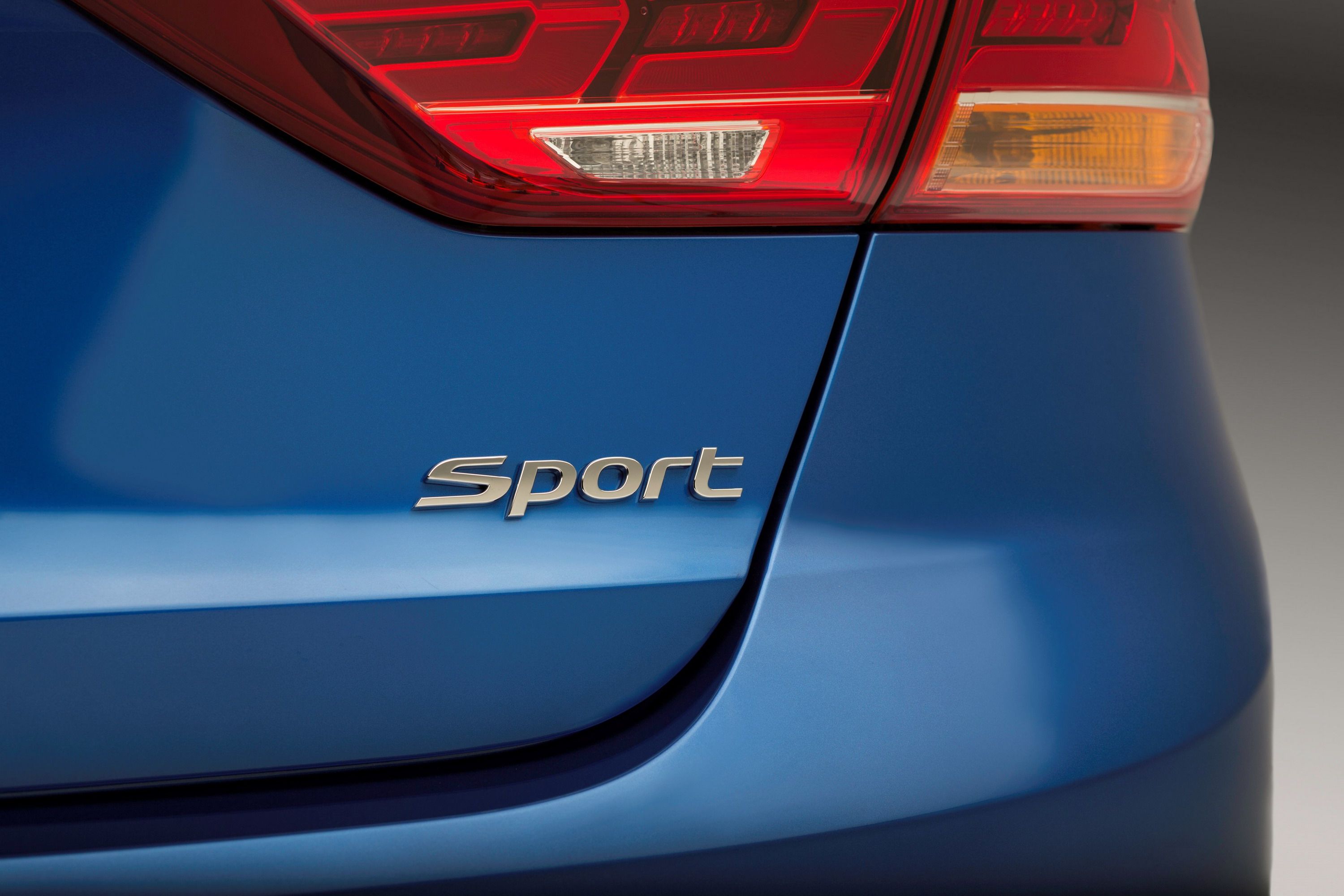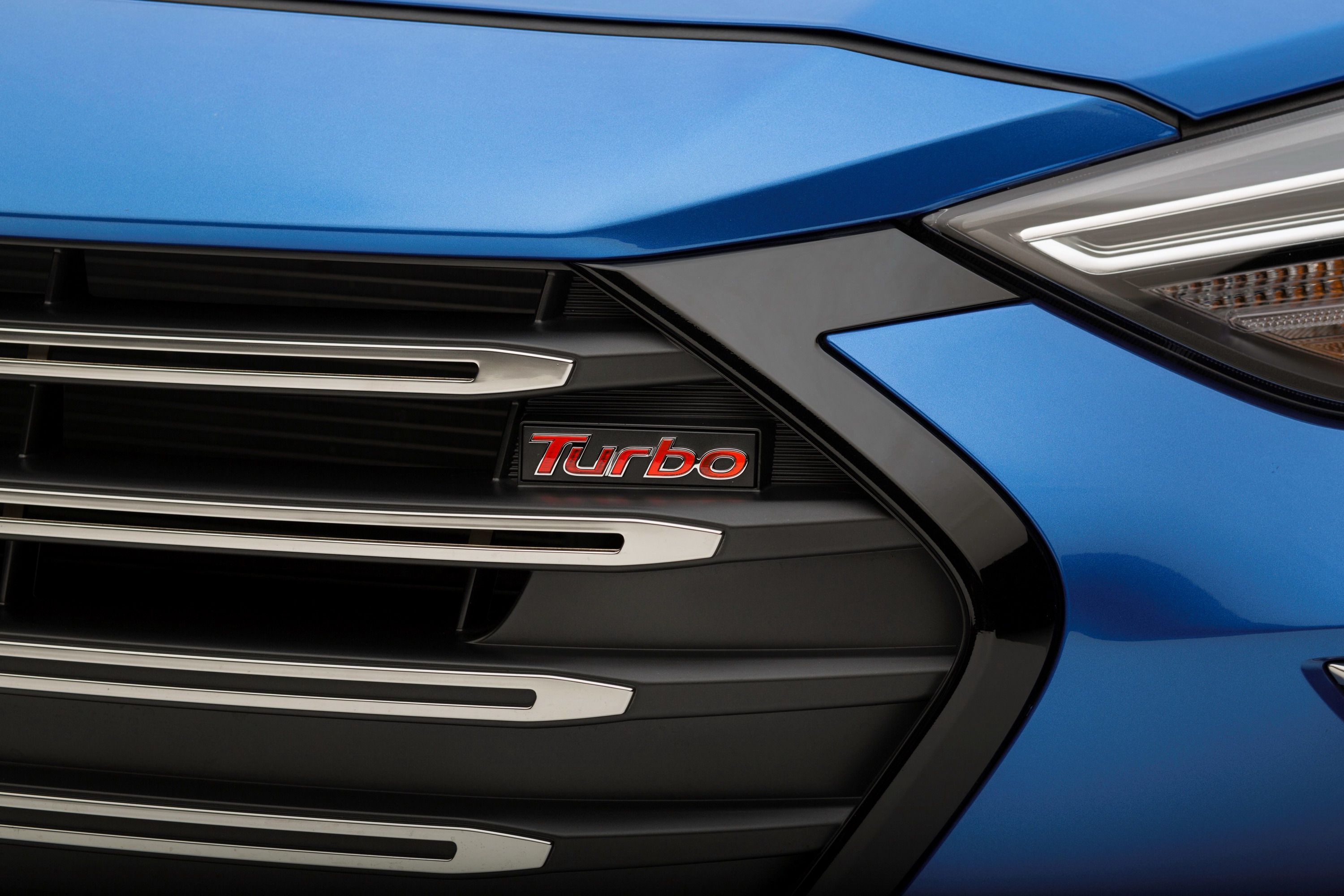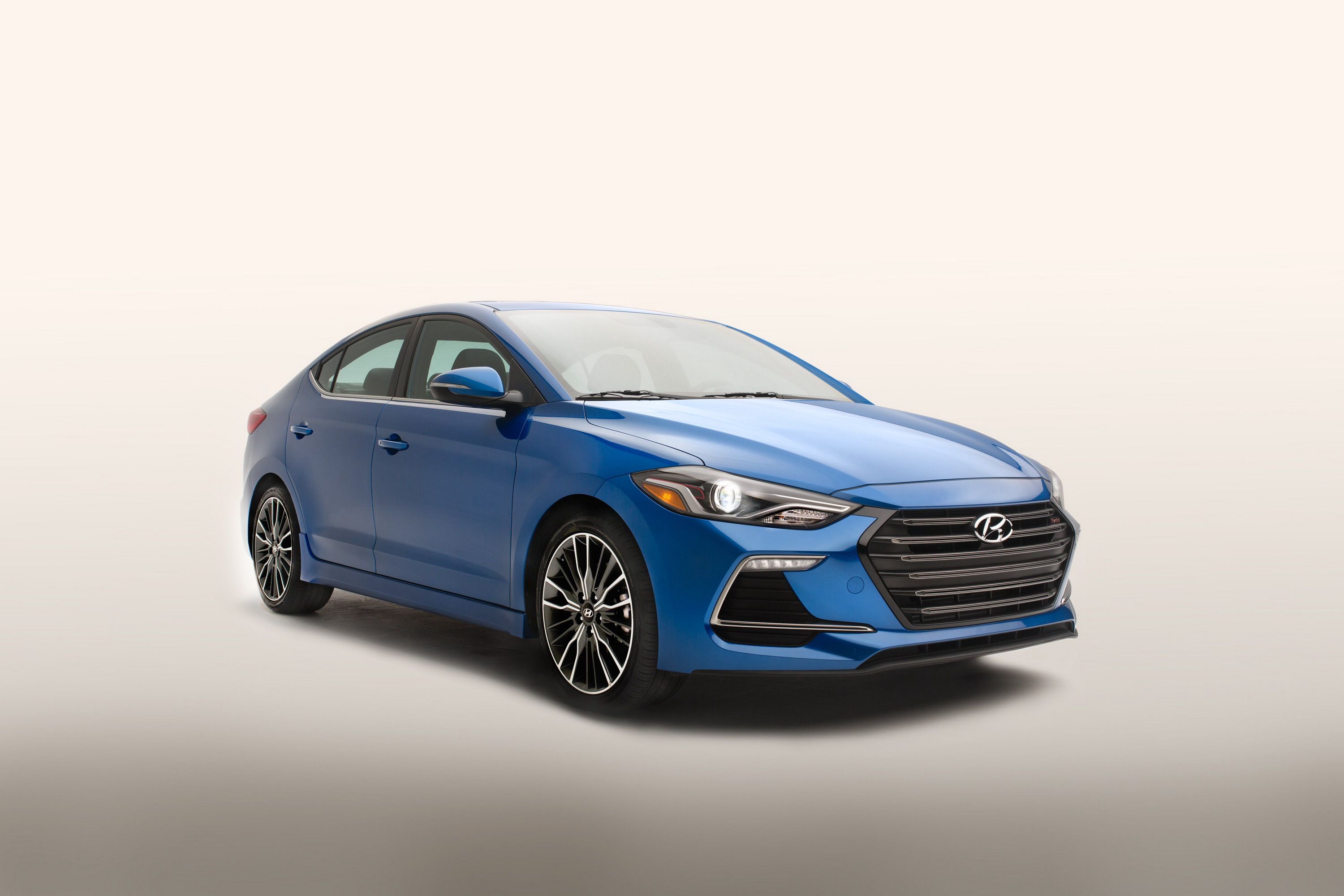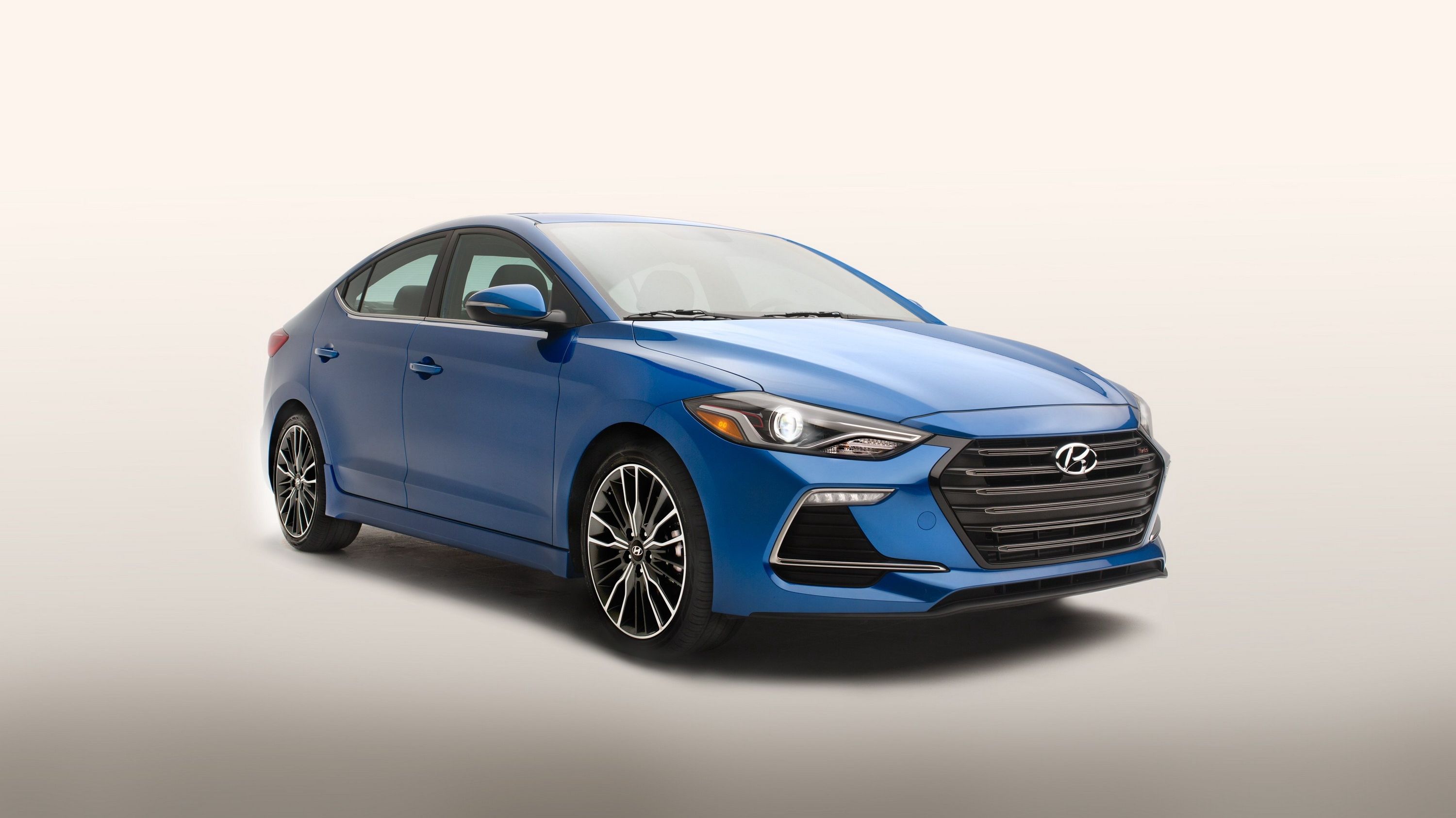Hyundai has done pretty well for itself in the entry-level compact segment and as a company as a whole. In fact, Hyundai has come a long way from when the South Korean company first came to U.S. shores. Take the Hyundai Elantra (or the Hyundai Avante as it’s known in its home country,) for instance. The first generation was about as ugly as it gets, and the following generation wasn’t much better. Fast forward to 2016 and the Elantra has been redesigned again to usher in the fifth generation. If you were to look at each generational model side-by-side, you would see that it got better with each generation, and the fifth generation has been the sportiest and best-looking Elantra yet.
Now, the Elantra is about to get a little better, as Hyundai is slated to launch a new trim level called the Elantra Sport (or Avante Sport in South Korea.) The Elantra Sport is said to offer the best performance ever for the Elantra from a 1.6-liter turbocharged engine. Furthermore, it offers a sportier look up front, and some extra goodies to differentiate it as the range-topping model in the Elantra lineup.
Hyundai’s blog, which is translated from Korean, claims that the Avante Sport is already available in the South Korean market. That means the U.S.-spec Elantra Sport should hit U.S. dealerships by the end of this year and, as the range-topping model, will start out higher than the $22,350 starting price of the 2017 Hyundai Elantra Limited. So, now that we know all of that, let’s take a closer look at the new Elantra Sport and see what makes it worthy of being the range-topping Elantra model.
Updated 07/12/2016: Hyundai officially announced the U.S.-Spec version of the Elantra Sport and, as expected, it is nearly identical to its South Korean counterpart. It will hit showrooms in the fourth quarter of this year with more details to be released closer to launch.
Continue reading to learn more about the Hyundai Elantra Sport.
2017 Hyundai Elantra Sport
- Make: Array
- Model: 2017 Hyundai Elantra Sport
- Engine/Motor: inline-4
- Horsepower: 201
- Torque: 195
- [do not use] Vehicle Model: Array
Exterior
Sources indicate that the U.S.-spec model will be nearly identical to its South Korean counterpart, so we actually have a lot to go on in the appearance department. The most striking feature of the exterior is the redesigned front fascia. It still sports the same bulky grille, but that grille will have a “Turbo” emblem on it. The corner air inlets have also been modified. The LED fog lights are now at the top of the vents, with a chrome trim element giving the vents more character. The trim element takes the same shape of the vents on the other trim levels, and the fog lights are now oriented in a horizontal fashion instead of vertically. The headlights are the same shape, but the layout inside the lens is different. The main difference is the LED strip that now elevates back to the center of the lens as opposed to running along the bottom of the lens.
Moving over to the sides, there isn’t much of substance, but the side skirts have been enlarged to give the side profile more pizazz. Aside from that, the only newsworthy change on the side profile are the new 18-inch alloy wheels that are wrapped in 225/40-series tires. Well, who would have thought of an Elantra coming standard with 18-inch wheels? The South Korean brand continues to surprise us.
Around back, we see some more significant changes that would probably catch you off guard if you ran into it on the street. The taillights have the same shape, but like the headlights, now feature a new layout. Instead of the boring look from the base-model Elantra, these taillights feature a cluster of three “backward C” LED strips with the reverse lamps hidden at the bottom of the lens. Moving down the rear, we find that the body lines on the corners of the rear fascia have been recessed even more and now sport a vent-like insert. There is also a new diffuser to further embrace the Elantra Sport’s performance-based nature.
Hyundai is also offering an “Extreme Package” that will provide a spoiler in the front and rear, a different wheel design known as “Crayon” wheels and offered with blue, red, black, or white accents, and additional performance parts. Pricing for the “Extreme Package” has yet to be revealed at this time.
Interior
Inside, there isn’t a whole lot to talk about, but there are a few new additions. First off, the Elantra Sport gets a new flat-bottom steering wheel with body-colored stitching and paddle shifters. There are also leather-wrapped, sport bucket seats that have red accents and a “Sport” emblem on the backrest. There also appears to be body-colored seatbelts and body-colored trim inserts on the doors. The shifter boot for the shifter – be it manual or automatic – is also leather and features body-colored stitching.
It’s not much, but it should spruce up the interior enough to make it more comfortable and inviting than the other the lesser trim levels. It looks like everything else remains the same, but surely a few things may change here and there once the U.S.-spec model makes its official debut. That said, stay tuned for future updates.
Drivetrain
The Elantra Sport is powered by a 1.6-liter, T-GDi, turbocharged engine that produces "more than" 200 horsepower and 190 pound-feet of torque. It comes with the option of a six-speed manual transmission or a dual-clutch seven-speed unit with paddle shifters. Hyundai hasn’t released too much information as far as performance figures go, but it has announced that it can do 0-to-60 mph in eight seconds and achieves a combined fuel consumption of 12 km per liter, which translates to just over 28 mpg on the U.S. scale.
Prices
As of the time of this writing, we don’t have any clue as to how hard the Elantra Sport will hit the bankroll. Here in the U.S., the Elantra is offered in two trim levels. The base-model, Elantra SE has a starting price of $17,150 and the current range-topping Elantra Limited starts out at $22,350. Pricing for the Elantra Sport has yet to be released, but we do know that it will hit showrooms here in North America in the fourth quarter of 2016 with pricing and official specs to be released closer to launch.
Competition
Honda Civic Sedan
It seems as if the world has more than enough compact sedans out there, and one of the more prominent contenders is the Honda Civic in sedan form. As far as competing against the Elantra Sport, the best contenders are the Civic EX-T, EX-L, and Touring trim levels. They come with a 1.5-liter, turbocharged, four-cylinder that delivers 174 horsepower and 162 pound-feet of torque. That might seem a little underpowered compared to the Elantra Sport’s 201 horsepower and 195 pound-feet, but some sources indicate that the Civic can hit 60 mph in 7.2 seconds when equipped with the 1.5-liter. That puts it nearly a second quicker than the Elantra Sport. The Civic EX-T starts out at $22,200; the EX-L starts out at $23,700, and the Touring starts out at $26,500.
Read our full review on the Honda Civic sedan here.
Mazda3
The Mazda3 sedan is another one of those sporty little sedans that tends to keep getting better with time. As far as competing with the Elantra Sport, the Mazda3 S Touring or S Grand Touring are the models to look at. They come equipped with a 2.5-liter four-cylinder that delivers 184 horsepower and 185 pound-feet of torque. The S Touring comes equipped with a six-speed automatic, but moving up to the Grand Touring trim will let you row your own gears with its six-speed manual. At the time of this writing, the S Touring trim level asks for $24,795, while the Grand Touring requests $24,745, which is right about where the Elantra Sport will probably be priced.
Read our full review on the Mazda3 here.
Conclusion
I find it interesting that Hyundai has decided to create a sport-oriented version of the Elantra. I’m not trying to hate on the South Korean company – it has made huge and impressive improvements to its vehicles over the years – but when I think of a small, sporty sedan, the last thing I would probably think of is the Elantra. It has always been known to be a small family mover, and it was good at it. That said, I like what Hyundai has done with the body to make the car sportier than the lesser trims in the lineup. I am a little unimpressed with the performance, however. 200 horsepower isn’t bad in a compact sedan, but it should have a little more if it is really meant to be a sports sedan. That and an 8.0-second sprint to 60 seems a little slow to me. The Civic hits the benchmark in 7.2 seconds, and there are several others out there that can beat it too. I have a feeling that the U.S. model will have better output and will be more in line with what we tend to expect, performance-wise, on this side of the pond.


